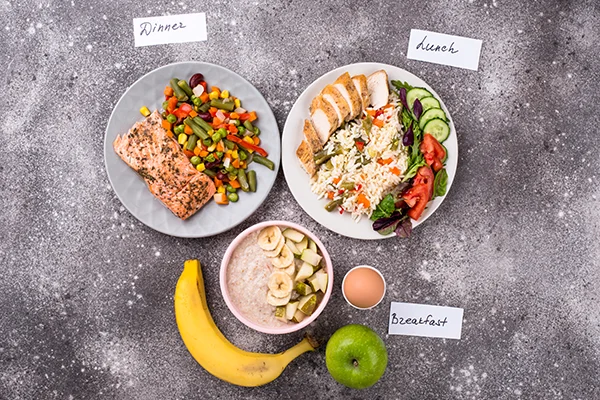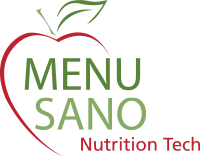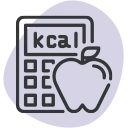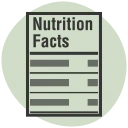Key Takeaways
- Meeting USDA Standards: Schools must follow USDA nutritional guidelines by providing balanced meals with essential nutrients while limiting unhealthy ingredients.
- Smart Menu Planning: Offering a variety of fruits, vegetables, whole grains, lean proteins, and low-fat dairy ensures nutritious and appealing meals.
- Monitoring & Compliance: Regular nutritional analysis with tools like MenuSano helps maintain compliance, improve meal quality, and reduce waste.
- Student Engagement & Efficient Service: Educating students on healthy eating, involving them in menu planning, and optimizing meal service systems encourage better choices and minimize waste.
Ensuring that your school cafeteria meets the USDA nutritional guidelines is a critical step in promoting the health and well-being of students. The nutritional needs of children and adolescents are unique, and schools play a key role in providing nutritious meals that support growth, cognitive development, and long-term health. This comprehensive guide will explore the steps and strategies schools can take to meet these guidelines, improve food quality, and ensure a balanced diet for all students.
Understanding USDA Nutritional Guidelines
The USDA sets detailed nutritional guidelines for school meals through the National School Lunch Program (NSLP) and the School Breakfast Program (SBP). These guidelines ensure that school meals are balanced and nutritious and provide students with the nutrients necessary for optimal health and performance. The guidelines include specific recommendations for calories, macronutrients, micronutrients, and food group servings.
The core principles of these guidelines are to:
- Provide nutrient-dense meals rich in vitamins and minerals and balanced across food groups.
- Limit excess calories, sodium, added sugars, and unhealthy fats.
- Offer a variety of fruits, vegetables, whole grains, and lean proteins.
- Ensure students receive adequate key nutrients, including calcium, iron, and fibre.
Step-by-Step Process for Meeting USDA Nutritional Guidelines
1. Familiarize Yourself with USDA Guidelines
The first step in ensuring that your school cafeteria meets USDA nutritional guidelines is understanding them thoroughly. The USDA provides detailed documents outlining the specific nutritional requirements for school meals. Key aspects to focus on include:
- Caloric Requirements: School meals must meet specific caloric needs based on age group. For instance, elementary school students typically require between 550 and 650 calories for lunch, while high school students may need 750 to 850 calories.
- Food Group Standards: Each meal should include servings from specific food groups: fruits, vegetables, grains, protein (e.g., lean meats, beans), and dairy (e.g., milk, cheese, yogurt). A balance of these food groups ensures students get a variety of nutrients.
- Limits on Unhealthy Ingredients: The USDA guidelines specify maximum limits on sodium, saturated fat, and added sugars. For example, a school lunch meal should contain no more than 640 mg of sodium for elementary students and no more than 850 mg for high school students.
2. Menu Planning with Variety and Balance
Effective menu planning is key to meeting the USDA guidelines and providing students with balanced, flavorful meals. When planning menus, consider the following:
- Incorporate a variety of fruits and vegetables: Aim to include at least one fruit and one vegetable in every meal. Opt for seasonal and locally sourced produce to enhance flavour and reduce costs. Introduce new vegetables and fruits regularly to encourage students to try new foods.
- Offer whole grains: Whole grains are a cornerstone of a balanced diet. Replace refined grains with whole grains such as brown rice, whole wheat bread, and quinoa. These grains are rich in fibre, which supports digestion and overall health.
- Lean proteins: Include lean protein sources such as chicken, turkey, fish, beans, tofu, and legumes. These foods provide essential amino acids needed for muscle development and energy.
- Dairy options: Provide low-fat or fat-free dairy products such as milk, cheese, and yogurt. Dairy is a good source of calcium and vitamin D for bone health.
Flavorful seasonings: Use herbs, spices, and healthy fats like olive oil to enhance flavour and reduce the need for excessive salt or added sugars.

3. Portion Control and Serving Sizes in School Cafeterias
Proper portion sizes are crucial in ensuring that meals adhere to USDA caloric guidelines and prevent over-serving unhealthy foods. The USDA provides specific serving size guidelines for each food group, which should be followed closely to maintain the nutritional balance of the meal. Portion control helps regulate calorie intake and prevents food waste.
Implementing portion control in school cafeterias is essential for promoting healthy eating habits and reducing food waste. Schools can start by using standardized serving utensils and portion guides to ensure consistency in meal sizes. Educating students about proper portion sizes through nutrition lessons and visual aids, such as MyPlate guidelines, can help them make healthier choices. Offering pre-portioned meals rather than self-serve options can also prevent overeating. Additionally, encouraging mindful eating by allowing adequate meal time and fostering a positive dining environment can help students recognize fullness cues. Regularly reviewing portion sizes based on age-specific nutritional needs ensures that students receive balanced, appropriate servings.
4. Regular Nutritional Analysis and Monitoring
Once your cafeteria’s menu has been established, it is vital to assess and analyze the nutritional content of each meal regularly served. Using software and tools that perform nutritional analysis, like MenuSano, can help ensure that meals consistently meet the USDA’s standards.
By conducting regular audits, you can adjust your meals as necessary to keep them in compliance with the USDA guidelines. Additionally, ongoing monitoring will help identify trends in meal preferences, identify areas for improvement, and track the effectiveness of your cafeteria’s nutrition program.
5. Educate and Engage Students
An essential part of meeting USDA guidelines is fostering an environment where students understand the importance of healthy eating. Nutrition education should be integrated into the curriculum and dining experience to encourage students to choose healthier food. Some key strategies include:
- Interactive nutrition programs: Offer workshops, taste tests, and school-wide challenges that engage students in making healthier food choices. Provide fun and interactive learning opportunities about the benefits of eating a balanced diet.
- Student involvement in menu planning: Engage students in the menu planning process by seeking feedback on what foods they like, what they want to try, and their favourite healthy snacks. This can increase buy-in and encourage students to try new and nutritious foods.
- Promotion of healthy habits: Encourage students to practice healthy eating habits at school and at home. Provide resources that highlight healthy snack options, hydration, and balanced meals.
Additionally, gathering feedback from students, parents, and staff can help identify areas for improvement. Regularly adjusting your menu, recipes, and meal service operations is essential in keeping nutritious and appealing meals to students.
6. Partnering with Nutrition Experts
Consider partnering with a registered dietitian or nutrition expert to ensure your cafeteria meets all nutritional guidelines and delivers optimal meals. These professionals can provide invaluable insights into menu planning and nutritional analysis and help you create meal plans that adhere to USDA standards.
7. Implementing Efficient Meal Service Systems
A well-organized meal service system helps streamline operations and ensure that meals are served promptly and efficiently while maintaining nutritional integrity. Consider adopting systems such as:
- Pre-portioned meals: Pre-portioning meals can help control portions and reduce food waste by ensuring students receive the appropriate amount based on dietary guidelines. This approach also helps maintain nutritional balance, as each meal is carefully planned to include the right proportions of protein, vegetables, grains, and dairy. Additionally, pre-portioned meals can improve efficiency in school cafeterias, speeding up service times and reducing long lines. Schools can also use this method to introduce students to proper portion sizes, helping them develop healthy eating habits that can last a lifetime.
- Offer vs. serve: The “offer vs. serve” method allows students to choose certain items from a designated selection, which can encourage healthier choices and reduce waste. Instead of being required to take all meal components, students can select only the foods they intend to eat, which helps minimize discarded food. This method promotes autonomy and responsibility, allowing students to make informed meal decisions. To make the most of this approach, schools can provide clear guidance on nutrition and balanced meal choices, ensuring that students select a variety of nutrient-dense foods. Proper training for cafeteria staff is also essential to help students make healthier choices while following portion guidelines.
How Can MenuSano Help
MenuSano enables schools to comply with USDA Nutritional Guidelines by offering precise nutrition analysis through a comprehensive ingredients database sourced from the FDA and other regulatory bodies. With MenuSano, schools can analyze recipes to confirm they meet caloric and nutrient standards while making necessary adjustments to align with USDA requirements. This user-friendly software simplifies menu compliance, minimizes food waste, and ensures the delivery of nutrient-rich meals that promote student health and academic success.
MenuSano is an advanced nutrition analysis software designed to help businesses, schools, and food service providers create healthier, compliant meals. It offers a comprehensive ingredient database, automated nutrition labelling, and regulatory compliance tools to simplify menu planning and ensure transparency. Trusted by industry professionals, MenuSano empowers users to make informed nutritional decisions while meeting government regulations.



















